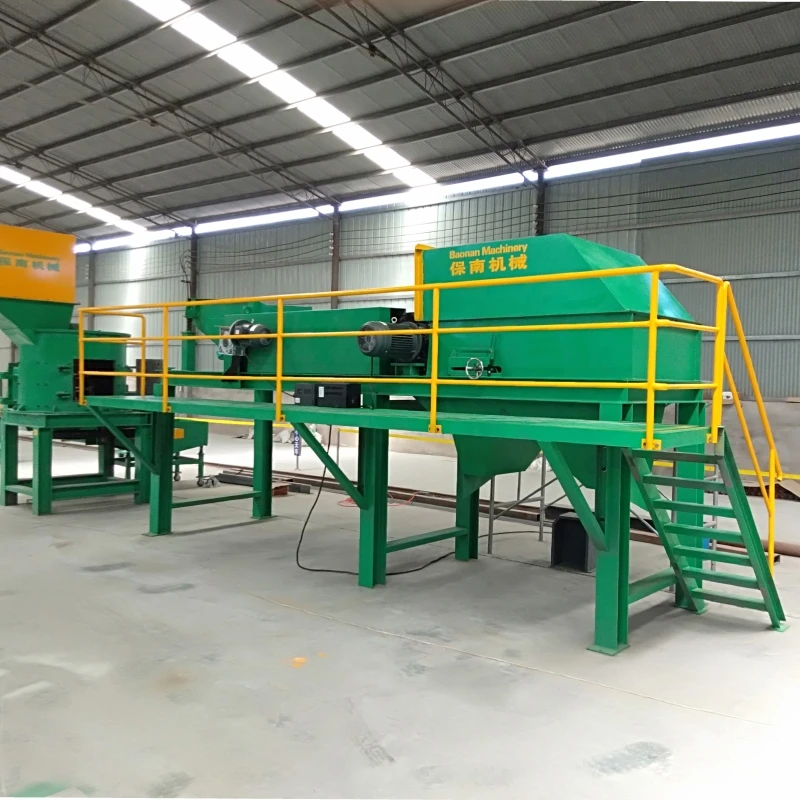

nov . 26, 2024 10:53 Back to list
Understanding the Eddy Current Separator A Diagrammatic Insight
The eddy current separator is a widely used device in the recycling industry, particularly designed to separate non-ferrous metals from other materials. As the demand for recycling increases, understanding the mechanisms and effectiveness of such devices has become paramount. A diagrammatic representation of an eddy current separator elucidates its working principle, components, and overall efficiency.
Basic Working Principle
The eddy current separator operates on the principle of electromagnetic induction. When a conductive material is exposed to a varying magnetic field, it generates circulating currents, called eddy currents. These currents form circular loops in the conductive material and their strength depends on the conductivity and thickness of the material. The interaction between the eddy currents and the magnetic field leads to the separation of the material from other waste.
Key Components and Their Functions
1. Magnetic Roller At the heart of the eddy current separator is the magnetic roller, which creates a strong magnetic field. As the material passes over this roller, the non-ferrous metals are subjected to this magnetic effect and are propelled away from non-metallic materials.
2. Feeding System Materials are fed onto the separator through a regulated feeding system. This ensures a consistent flow of materials, allowing for optimal separation efficiency.
3. Conveyor Belt A conveyor belt transports the mixed materials towards the magnetic roller. The speed of the conveyor belt can be adjusted depending on the type and volume of materials being processed.
4. Discharge Area Once the non-ferrous metals are separated, they are directed to a discharge area. This space is often equipped with separate bins or chutes for the collection of aluminum, copper, or other metals.
5. Control Panel The control panel allows operators to monitor and adjust various parameters such as conveyor speed, magnetic strength, and operating times. This flexibility is crucial for handling different types of materials efficiently.
Benefits of Using Eddy Current Separators

Eddy current separators offer several advantages, making them essential in the separation process
- High Efficiency These separators can achieve a high rate of separation, particularly for small and thin non-ferrous materials.
- Minimal Contamination Since the setup can effectively differentiate various materials, the risk of contamination in collected metals is significantly reduced.
- Environmentally Friendly By promoting the recycling of non-ferrous metals, eddy current separators contribute to reduced mining activities and lower energy consumption.
- Versatility They can be used in various industries, including waste management, plastics recycling, and scrap metal processing.
Application in Recycling
The role of eddy current separators in recycling is pivotal. In a typical waste recycling facility, mixed materials arrive from various sources. After preliminary sorting, eddy current separators are employed to extract valuable non-ferrous metals. The efficiency of this process can greatly enhance the overall profitability of recycling operations.
The diagram of an eddy current separator emphasizes the concept of separation by action. When non-ferrous metals pass through the device, they are propelled away from non-metallic waste due to the strong magnetic fields generated. This clear distinction in movement underscores the operational efficacy of the device.
Conclusion
In conclusion, the eddy current separator stands out as a critical technology within the recycling domain. Its unique ability to effectively separate non-ferrous metals from mixed waste is visually captured through detailed diagrams illustrating the device's components and operational principles. Continuous advancements in eddy current technology promise improvements in the efficiency and effectiveness of the recycling process, further contributing to sustainable resource management. Understanding these mechanisms not only enhances operational practices but also emphasizes the importance of recycling in preserving our environment.
Latest news
Troubleshooting Common Eddy Separator Problems
NewsJul.04,2025
The Role of Metal Recycling Plants in Circular Economy
NewsJul.04,2025
The Impact of Recycling Line Pickers on Waste Management Costs
NewsJul.04,2025
Safety Features Every Metal Shredder Should Have
NewsJul.04,2025
How Industrial Shredders Improve Waste Management Systems
NewsJul.04,2025
How Cable Granulators Contribute to Sustainable Recycling
NewsJul.04,2025